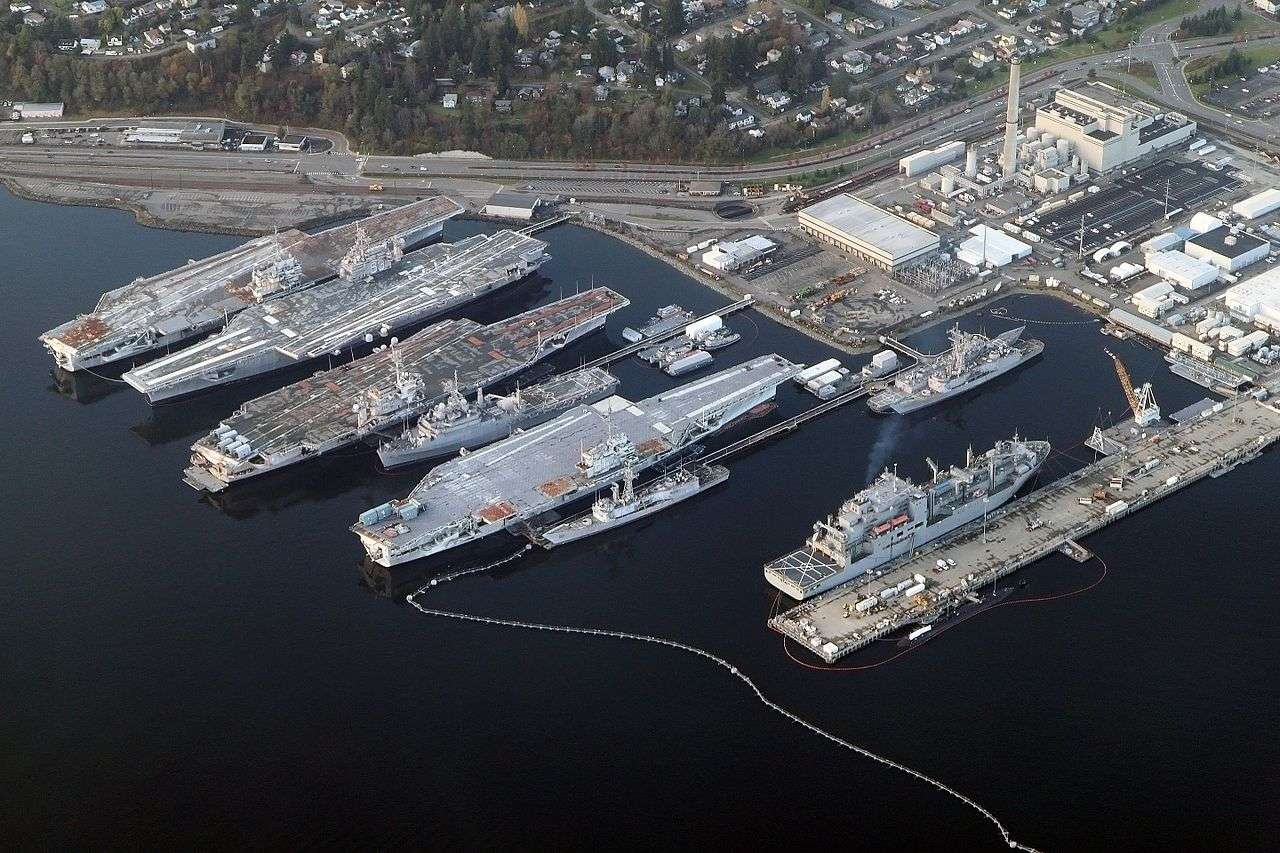The Puget Sound Naval Shipyard (PSNS), situated along the shoreline of Bremerton, Washington, is a storied site and a venerable stalwart of the United States Navy’s infrastructure.

This bastion of naval power on the Pacific Northwest coast, active since its inception in 1891, represents a fascinating intersection of American history, technological evolution, and strategic naval operations.
Early Years
The Puget Sound Naval Shipyard has a rich history dating back to its establishment in 1891.
Initially set up as a Naval Station, it earned the designation of Navy Yard Puget Sound in 1901.
 Interior shot of building 108 at Puget Sound, 4 May 1936.
Interior shot of building 108 at Puget Sound, 4 May 1936.
As the world plunged into the turmoil of World War I, the shipyard built and launched a wide array of vessels to strengthen the U.S. naval force.
This included the construction of 25 subchasers, seven submarines, two minesweepers, seven seagoing tugs, two ammunition ships, and an impressive fleet of 1,700 small boats.
 Aircraft carriers moored at Puget Sound Naval Shipyard in 1929. The top, middle and bottom ships are USS Lexington, USS Saratoga and USS Langley respectively.
Aircraft carriers moored at Puget Sound Naval Shipyard in 1929. The top, middle and bottom ships are USS Lexington, USS Saratoga and USS Langley respectively.
History Of Puget Sound
During the cataclysmic years of World War II, the shipyard’s focus shifted to the repair of battle-damaged ships belonging to both the U.S. fleet and its allies.
Despite this shift in focus, the shipyard constructed a handful of Fletcher-class vessels and several Evarts-class destroyer escorts.
Following the end of World War II, the yard was redesignated as the Puget Sound Naval Shipyard and undertook an extensive program to modernize carriers. This included the innovative task of converting conventional flight decks into angle decks.
 Top down view of the Puget Sound Naval shipyard in 1940.
Top down view of the Puget Sound Naval shipyard in 1940.
As the Korean War erupted, the shipyard was once again called upon, this time for the activation of ships.
The late 1950s ushered in an era of new construction, with the shipyard playing a crucial role in building a new class of guided missile frigates.
In 1965, the shipyard marked a significant milestone when the USS Sculpin (SSN 590) became the first nuclear-powered submarine to be maintained at Puget Sound.
Recent Years
In recognition of its historic contributions and legacy, the shipyard was designated a National Historic Landmark in 1992.
Today, the historic district encompasses 22 contributing buildings and 42 contributing structures, as well as 49 non-contributing buildings, structures, and objects, standing as testament to the shipyard’s evolving history and enduring relevance.
The shipyard now covers a massive 179 acres, making it the Pacific Northwests largest naval shore facility.
The PSNS is also a major employer in the region, supporting around 14,000 jobs for military personnel, civilians, and contractors.
 Ships at the Puget Sound Naval Shipyard, pictures in November, 2012. Image by Jelson25 CC BY-SA 3.0
Ships at the Puget Sound Naval Shipyard, pictures in November, 2012. Image by Jelson25 CC BY-SA 3.0
From a small naval station on the edge of Sinclair Inlet, the PSNS has grown into a cornerstone of America’s naval infrastructure and an enduring symbol of the nation’s maritime strength.
The shipyard’s longevity and sustained operations from the late 19th century through the 21st century underscore its crucial role in America’s military narrative.